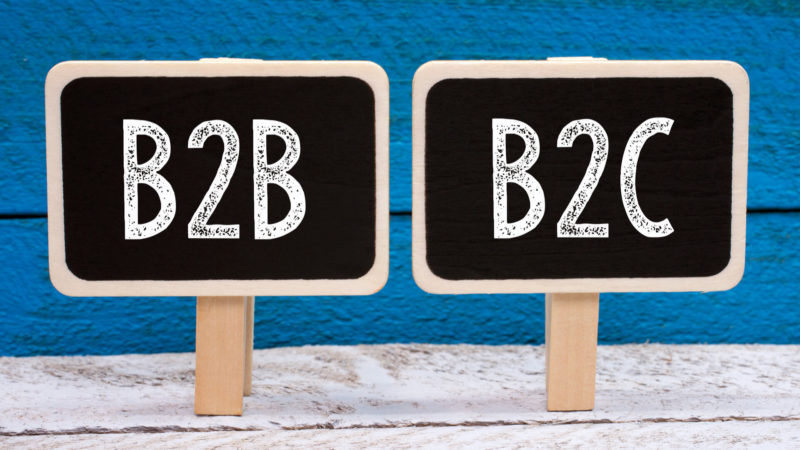Creating a B2B and B2C overlap strategy
How should you structure paid search accounts when your targets include both businesses and consumers? Columnist Justin Freid discusses how to develop an 'overlap strategy.'

B2B and B2C search marketing efforts are two different animals. From keyword development to prequalifying searchers through ad text, distinct strategies need to be developed for each audience.
In some cases, businesses have a need to market to both consumers and businesses. For example, the PC/laptop industry makes a significant amount of money from sales directly to the consumers but also generates a significant amount of revenue working with companies who supply their workforce with computers.
Segmenting keywords by audience
In cases where a business is pushing both B2B and B2C search marketing efforts, an “overlap strategy” needs to be developed. The overlap strategy outlines the rules of engagement for keyword segmentation between the two marketing efforts. For each keyword, one audience-focused effort will receive priority or ownership, depending on the audience to whom it is most relevant.
An example of this is as follows:
Keywords:
- New touch screen laptops.
- Best laptop for college.
- Laptop for small businesses.
When looking at these keywords, each can potentially be segmented into one of three categories: B2C, B2B or overlap.
The keyword “best laptop for college” most likely fits well within the B2C segment, as it provides signals that someone is shopping for a new laptop as they head to college. The keyword “laptop for small businesses” clearly calls out businesses, pushing this toward the B2B segment. Finally, the keyword “new touch screen laptops,” while most likely falling under the B2C segment, theoretically could be an IT person or business owner looking for new touch screen laptops for their company — thus placing this keyword in the “overlap” segment.
For keywords that fall cleanly within the B2B or B2C segments, they receive “ownership” of the keyword. That means these keywords will only be utilized within that specific audience’s set of campaigns or account (more on this later). Keywords that fall within the overlap segment become prime opportunities for testing between audience accounts and, when possible, double serving.
Segmenting the keywords by audience can be a laborious process, but when done correctly, it can significantly increase efficiency in your online sales or lead generation process. Many elements go into the segmentation process, including but not limited to: historic performance data, primary or secondary research and qualitative insights from key audiences such as customers and internal stakeholders.
Strategically leveraging double serving
When it makes sense strategically, double serving can be a useful tactic to present both B2C and B2B text ads and prequalify your audience through specific callouts within the ad text. In order to double serve, the brand must use different domains for their B2B and B2C efforts and have contextually different websites. It is wise to not try to game Google or Bing in these cases, as they actively shut down mirrored websites attempting to take advantage of double serving.
As mentioned above, double serving can be used strategically and efficiently. While it will not make sense on every keyword, a keyword like “new touch screen laptops” may make sense for a company that just pushed out the latest and greatest touch screen laptop.
Double serving on this keyword may look something like this:
As you can see, callouts exist within the ad text to prequalify the searcher. The top ad specifically calls out “Home Laptops,” while the second ad mentions “Workforce” and “Make Your Team as Efficient as Possible.” Using language that speaks to a specific audience can help eliminate wasted clicks.
In some cases where the audiences are extremely specific, the title of the target audience can be used within the ad. For example, if you happen to be marketing a pharmaceutical drug, calling out “Official Patient Website” or “Official Physician Website” in your ad text can help prequalify the searcher.
Double serving can make sense in a few different situations. If your brand has a substantial amount of popularity, you may find both consumer and business audiences searching high-level brand terms. In cases like this, double serving makes sense. Of course, bid rules will need to be implemented to limit bid inflation. This tactic can also be utilized if competitive brands are bidding on your brand name. With higher Quality Scores, you should be able to push their ads down by taking up the top two spots.
Your strategy must continue to evolve
As consumer purchase behavior changes, so should your strategy. It will be very dependent on your product and how educated your audiences are, but in order to truly be successful, you must continue to test and optimize your overlap strategy.
By monitoring site traffic at the keyword level, you can review which keywords are converting well and which keywords are jumping from one site to another, and determine if keywords should be moved to different groupings. It does not hurt to pause a keyword in one audience-specific effort and test it in another. The point is to always review what the data and insights are telling you and ultimately improve.
Contributing authors are invited to create content for Search Engine Land and are chosen for their expertise and contribution to the search community. Our contributors work under the oversight of the editorial staff and contributions are checked for quality and relevance to our readers. The opinions they express are their own.
Related stories
